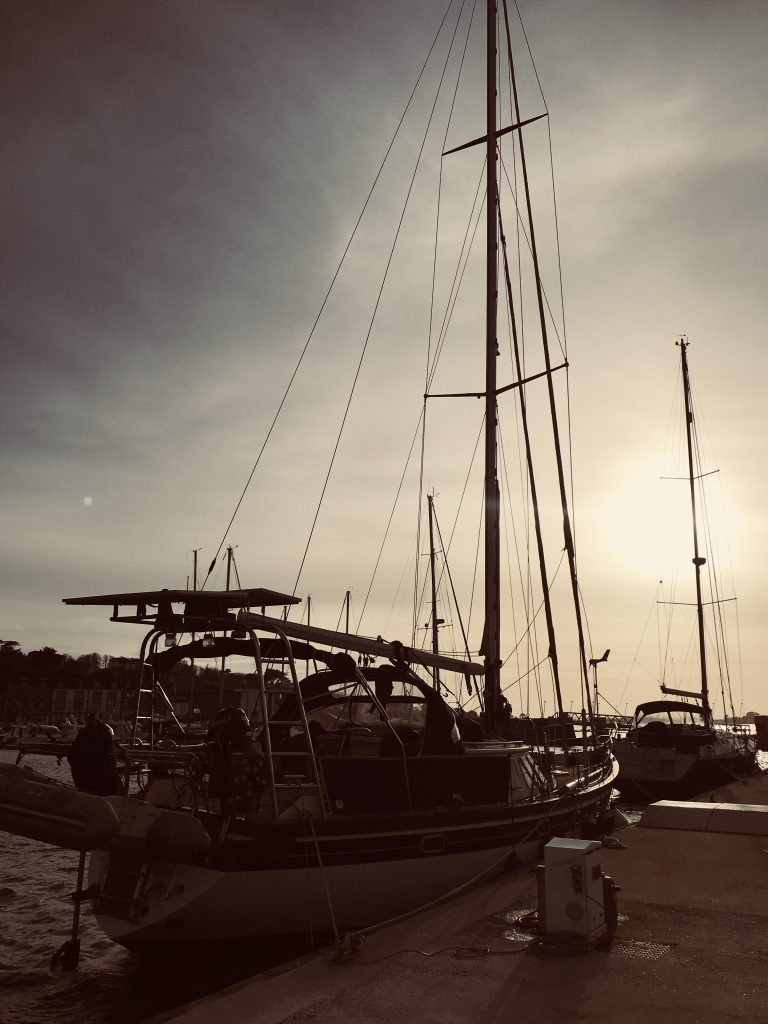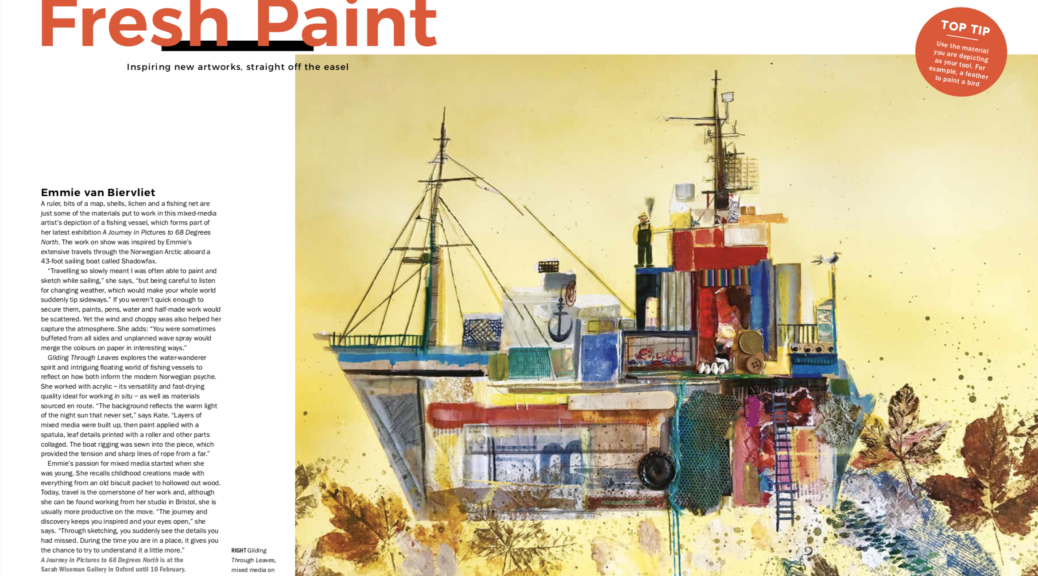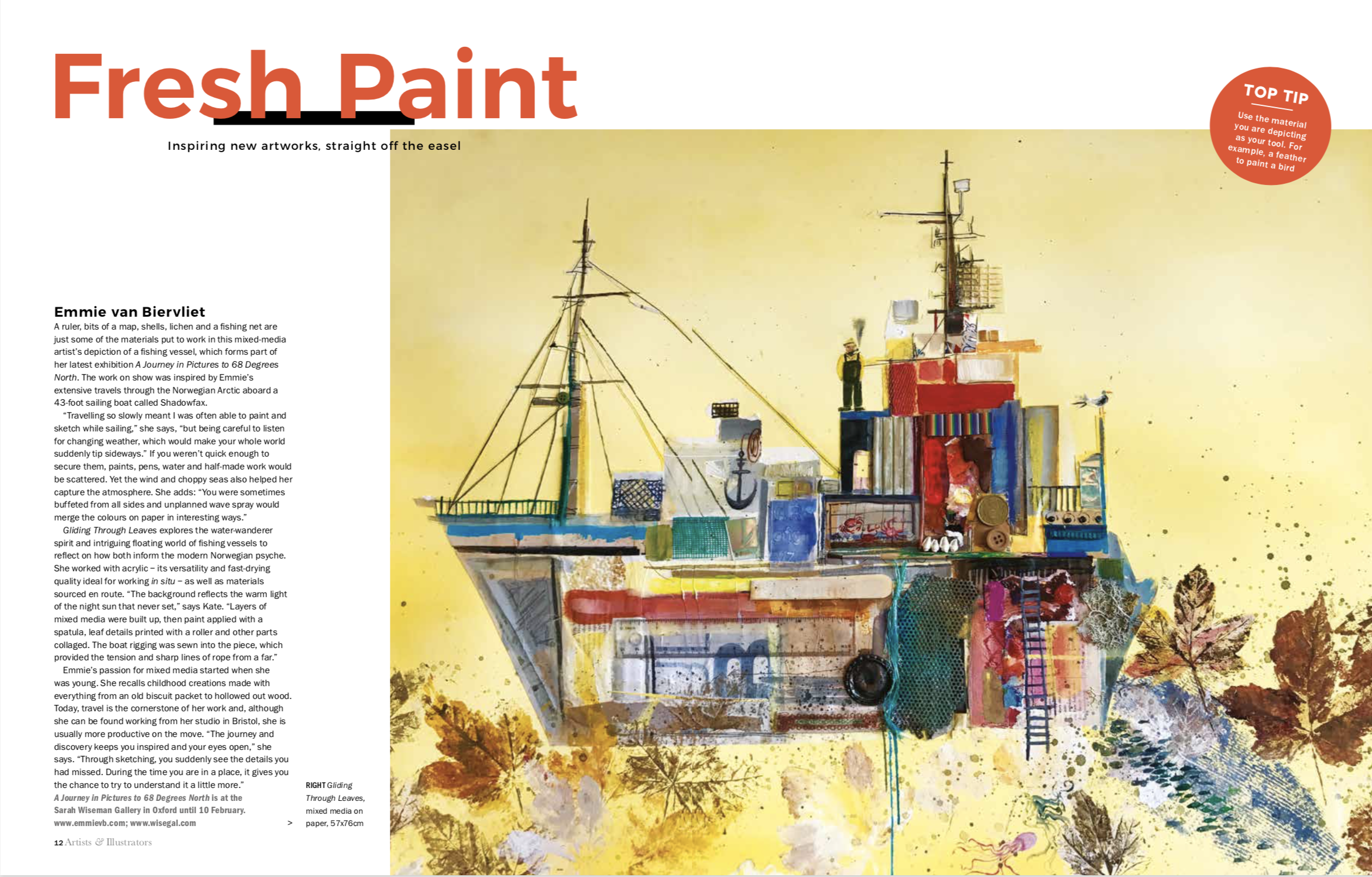So what happened on Monday night…?
We had been watching the forecast carefully for the days before and a large low pressure was coming in from the West likely to bring strong winds. There was quite a lot of movement of boats some diving back to the mainland for cover others carefully assessing their options, changing anchorages and positions. The Scillys are low lying and offer good anchorages from one or two directions of wind but there are few options which offer protection from the wind which comes from all directs. We opted for a quiet place, Great Bay on St Martin’s, nice sandy bottom, beautiful spot but exposed, maybe very exposed to the North. The eye of the storm was likely to go straight over the top of us and due to this the forecast kept changing slightly but making a big effect on what to expect.
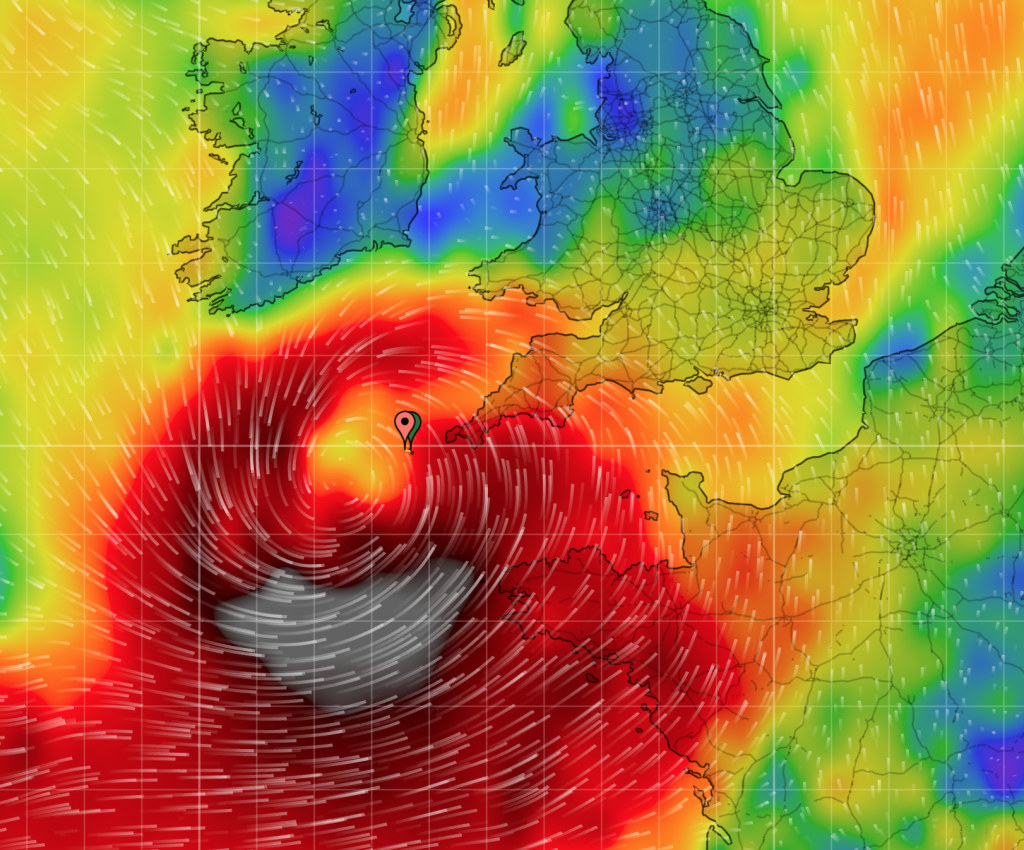
Monday afternoon started with a gradual but increasing wind strength to a strong and sustained wind of about 30knots or so, pelting rain by early evening a little swell got up but we and the other two boats rode it out without any issues. By 8pm it had calmed and there was a sudden lull a lightening in the skies and the rain stopped. Now the next part was going to be more difficult to predict and would be coming in the early hours. We relocated to a different part of the bay in between two boats and close to rocks but with the wind due to do a full 180 degree shift the idea would be that we would be blown off them… Shouting to the lightweight racing boat anchored next door both boats agreed the first part hadn’t been too bad after all.
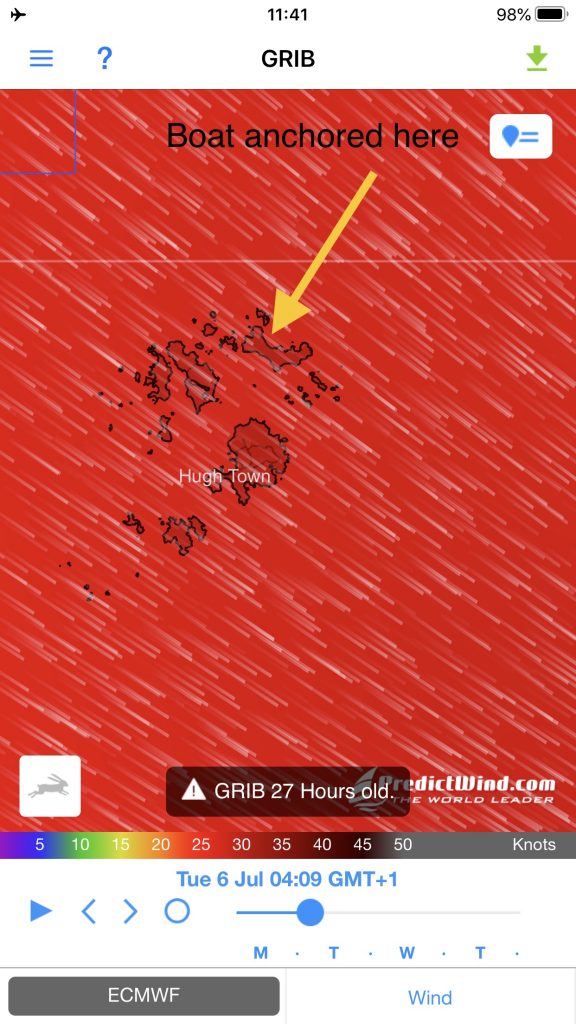
I happily went to sleep with Tim opting to stay up on watch, gently rocked to sleep by a little swell. During the night there was a sudden commotion and I was awake in a moment to. “Get up the boat next to us is dragging fast and might be about to go in us” I was on deck and kitted up in about 30 seconds! The world outside had dramatically changed, it was very dark and forbodding, the boat adjascent was careering out of control up and down from the chop and swell and the roar of the wind was so loud whistling past, we had to shout to each other in the cockpit. Panicked voices came through the wind as they wrestled to get the anchor up, nearby rocks must of been looming out of the darkness by this point. They careered from one side to the other and we watched on to see what was going to onfold. Fenders had already been prepared for the eventuality of them hitting. At this point channel 16 came alive with reports to the coastguard along the lines of “We are on the rocks and require immediate assistance” Another French boat trying to make themselves understood that they also had been blown aground “what lifesaving equipment do you have onboard?”came the reply from the coastguard? Then a single handed friend’s boat came onto the channel and we feared the worse…
Monitoring the situation outside the boat next to us still thrashing and careering around. We seemed to be holding and though the chop and general swell was getting up a little the wind was staying at about 40knots down from when it had apparently suddenly torn through the anchorage from little wind to about 50knots in the opposite direction to what it had been. The swell increased a little as the early hours wore on but I think many of the boats where relieved to see the first silver glimmers of morning light at about 4am.
The next day reflecting on how events had unfolded it was good we had an early hours watch on.
We had potentially anchored a little too close to a light boat that was likely to come unstuck and in other anchorages this was a very real issue with a favourite anchorage ‘St Helen’s pool’, where all but one boat apparently dragged their anchors that night! They had been left with motoring in the pitch darkness. Many had heavy kelp attached which had meant the windless had failed and they had been unable to reset the anchors. The boat that ended up amongst the rocks had all crew rescued by the lifeboat and taken ashore, they came back the next day and the boat was refloated apparently undamaged with an ingenious rope haul set up by the Jake skipper on Mananan at low tide.
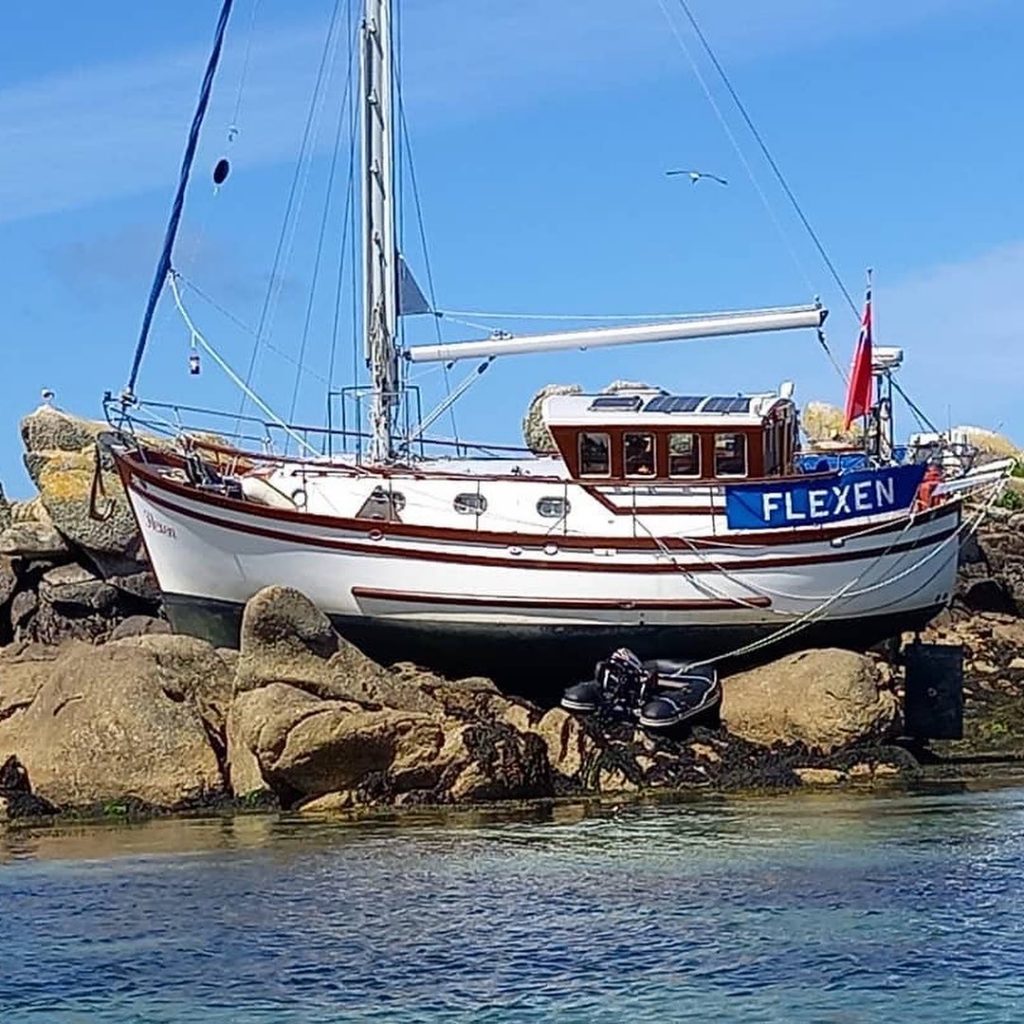
What worked:
- Taking down the headsails and adding a storm riding sail had meant we didn’t sail from side to side as much as have done before.
- The anchor ‘a spade’ once again lived up to its name and did an impressive job of holding fast in the conditions.
- We ensured the anchor had been ‘reset’ in position when the wind switched 180 before the big blow came through by raising it and resetting. Many other boats assumed their anchors would reset by themselves. This is a problem we see over and over.
- Careful calculation of the changing weather had allowed a precise timing of when the the second big depression would hit.
- Anchorage position was good though not very sheltered from later swell or wind that got up.
The change of anchorage worked, we were near some shelter from the land but the key was not to be near any boats so we would probably have also been ok in a slightly more open part of the bay just nearby.
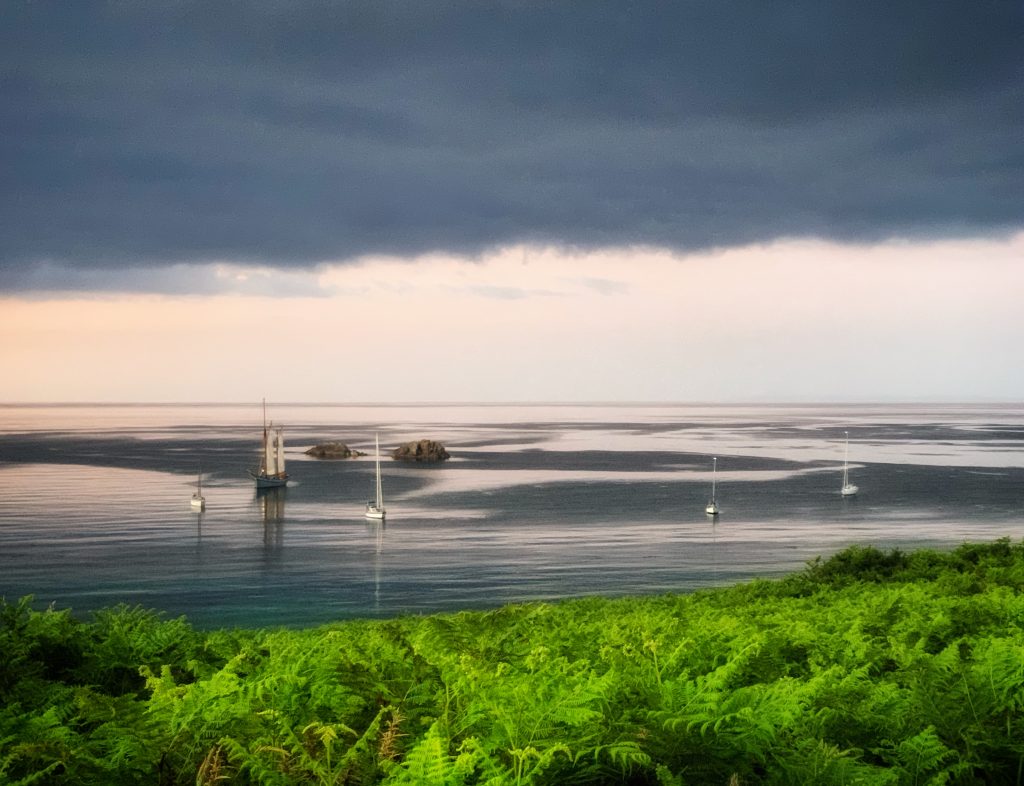
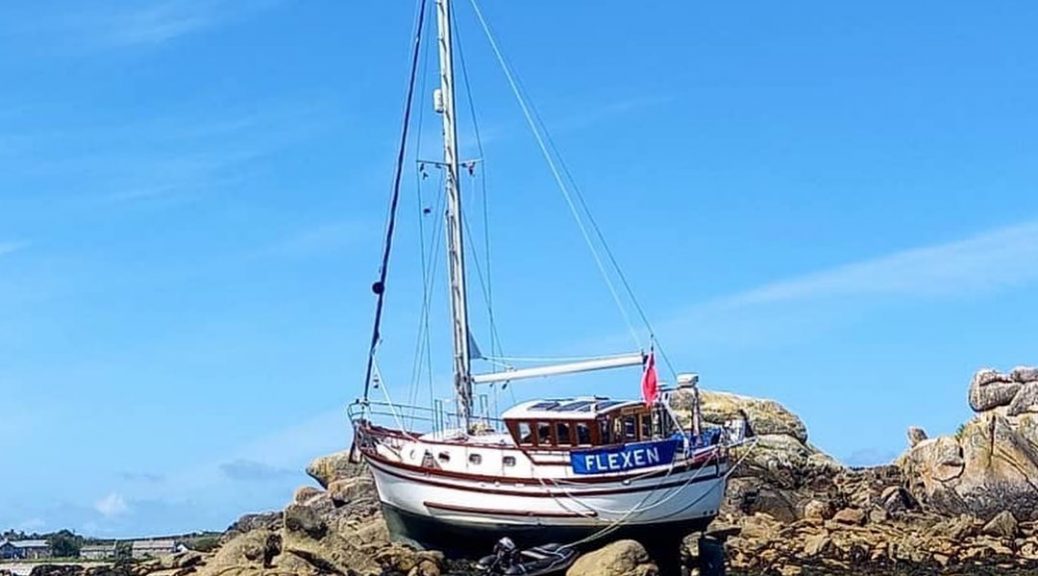
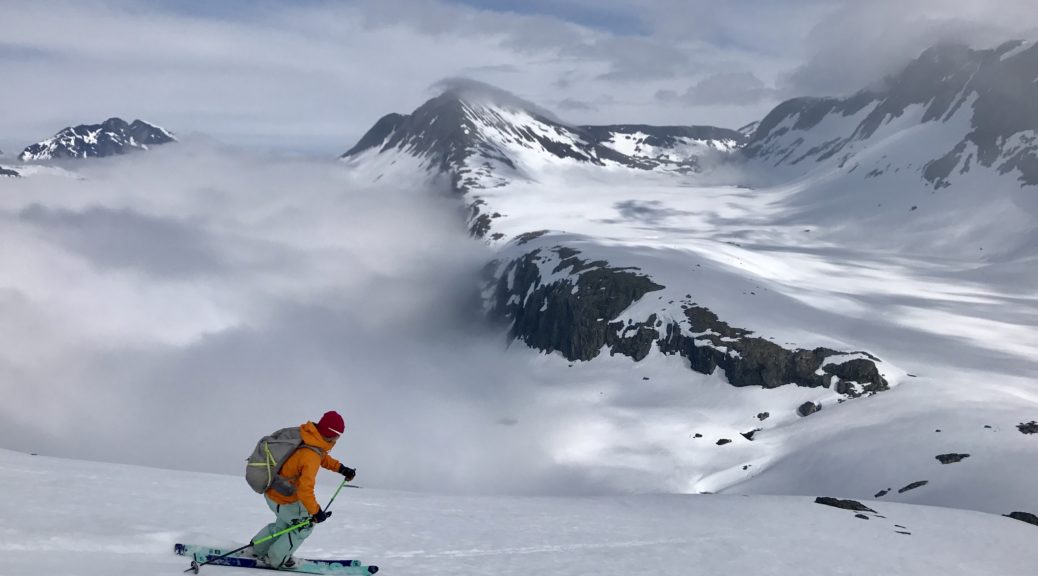
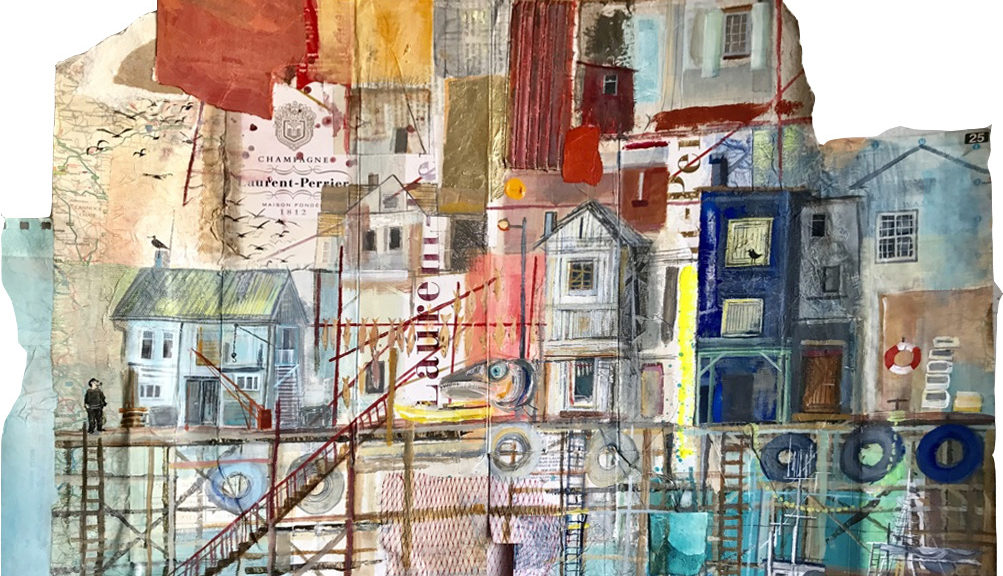
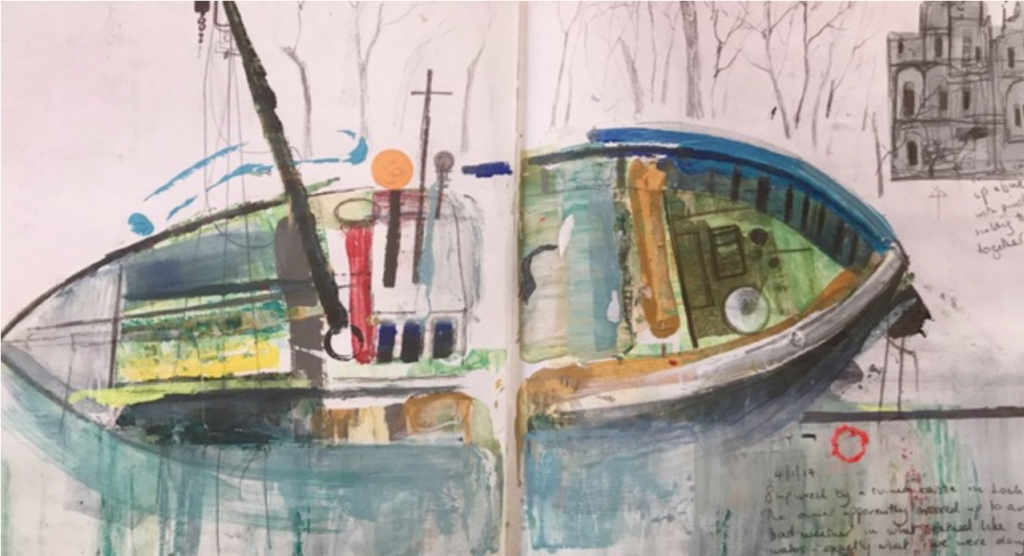
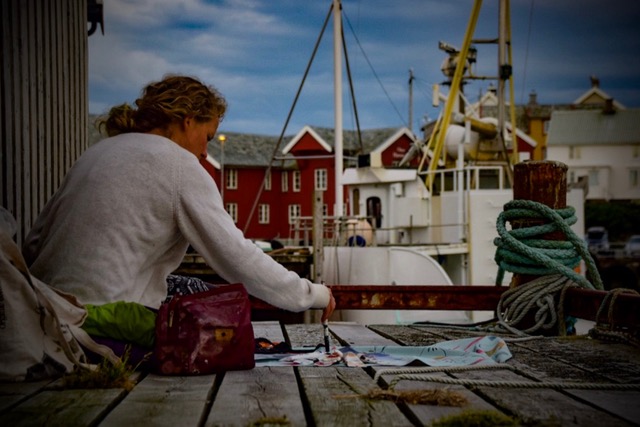
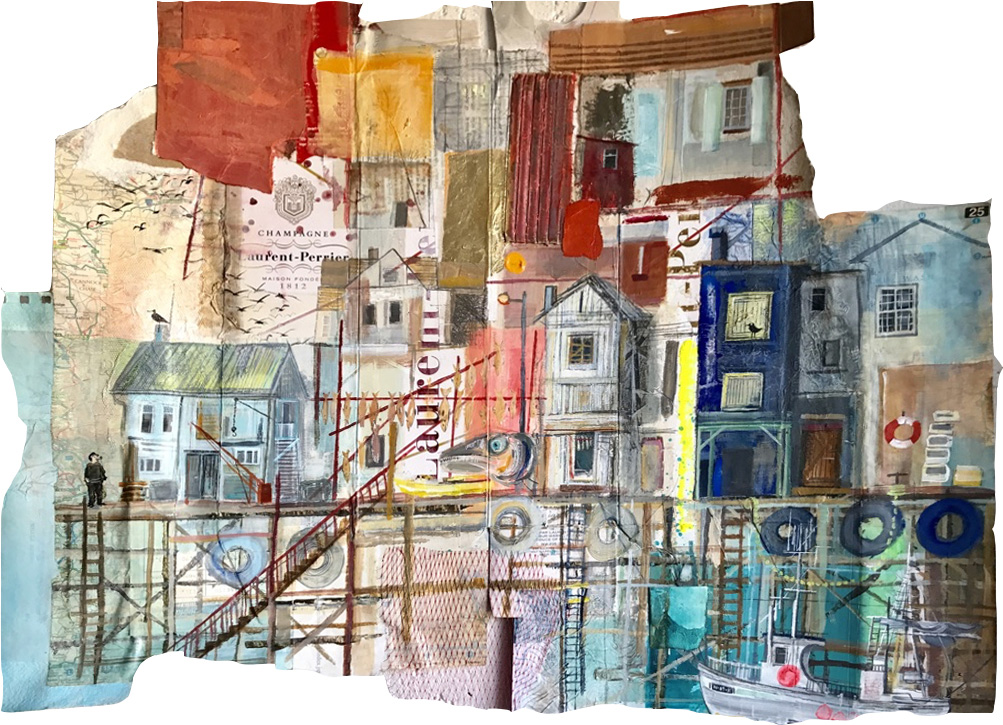
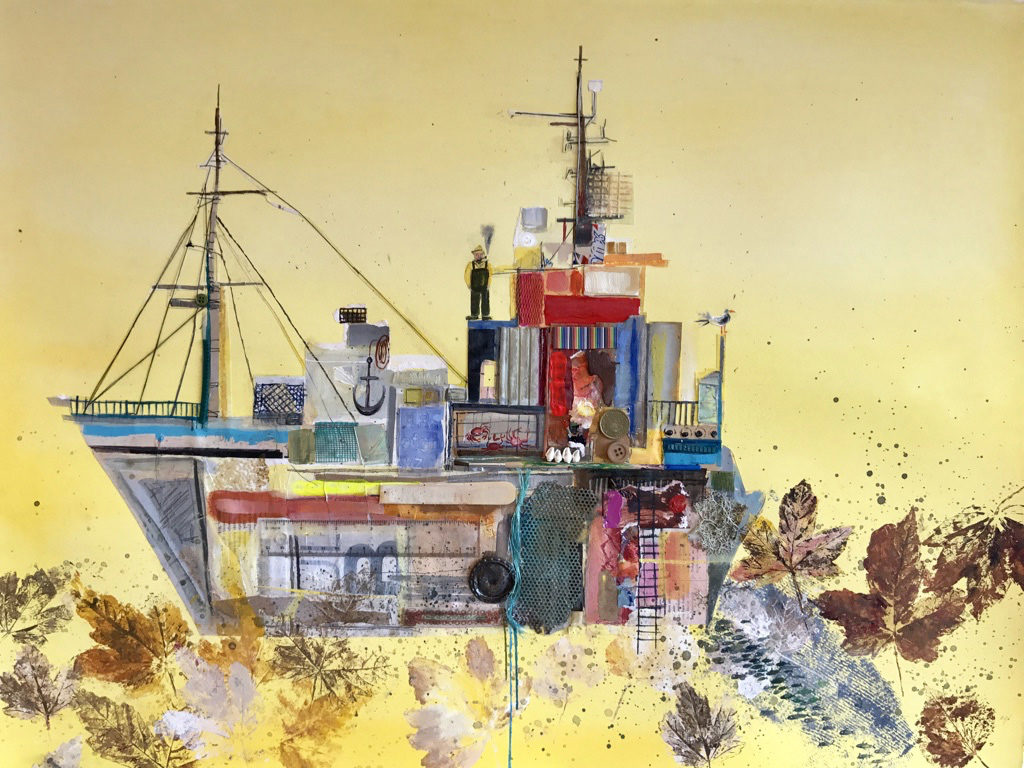
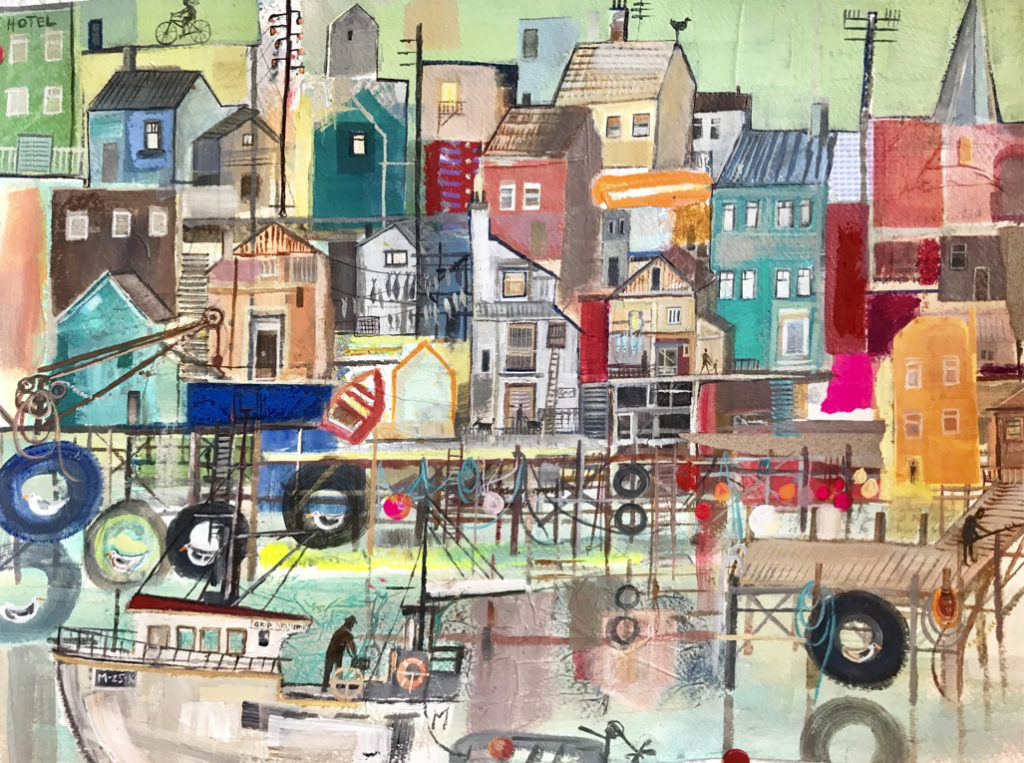
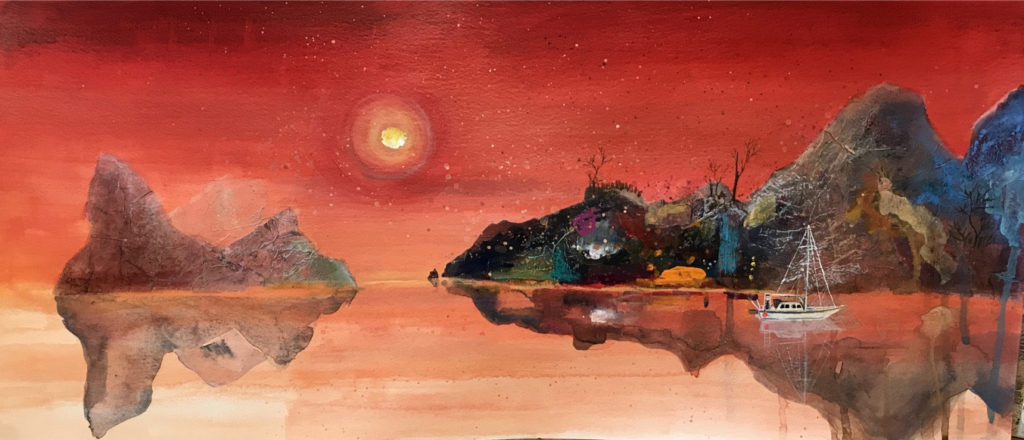
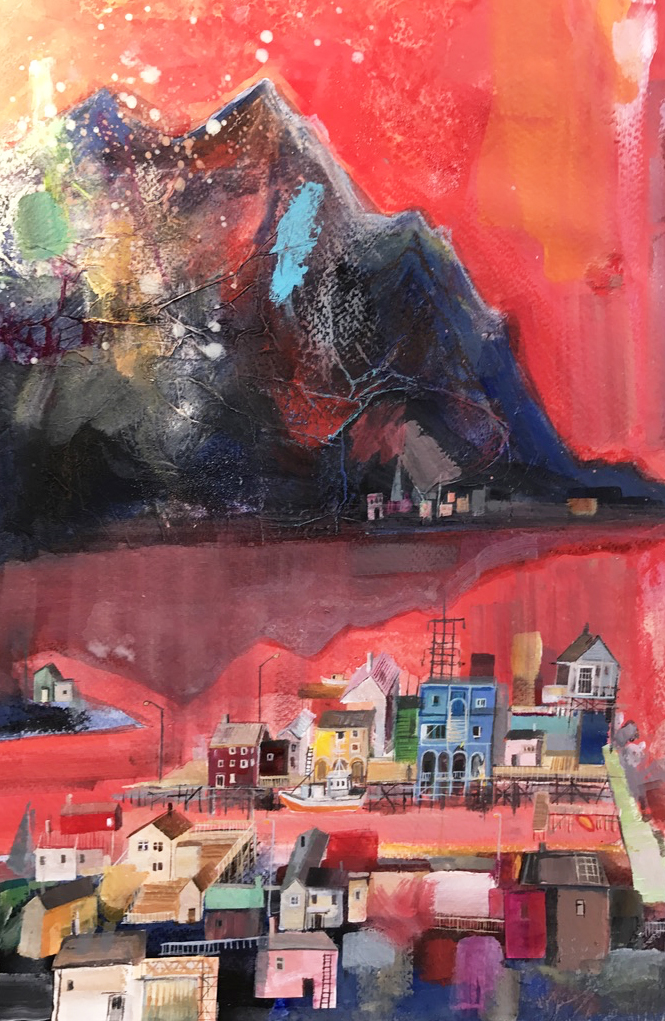
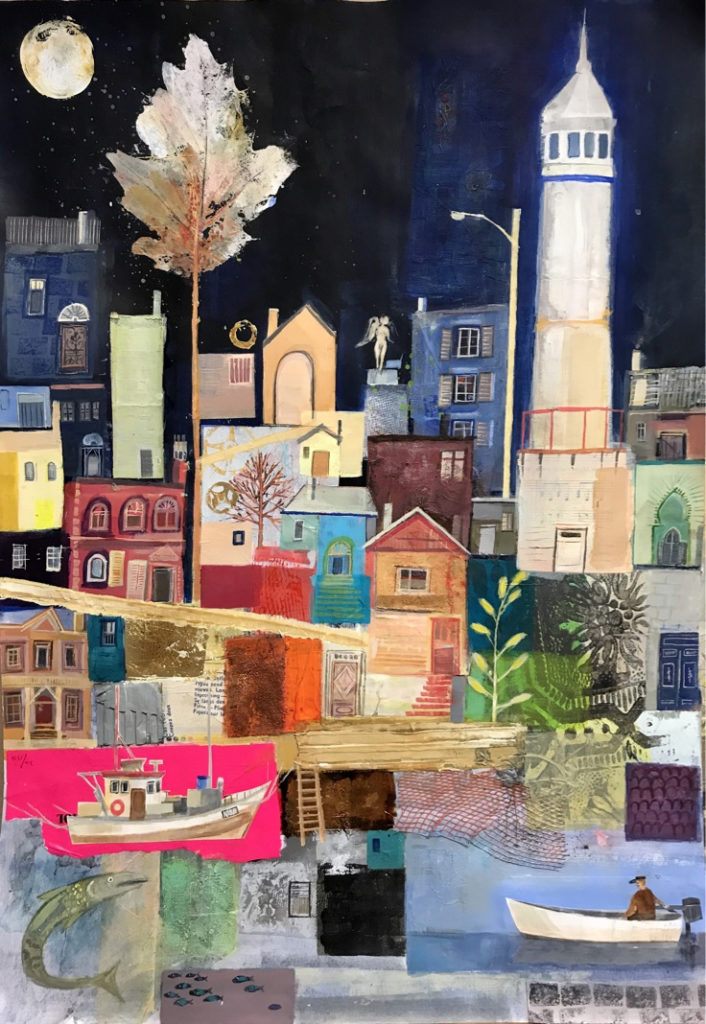
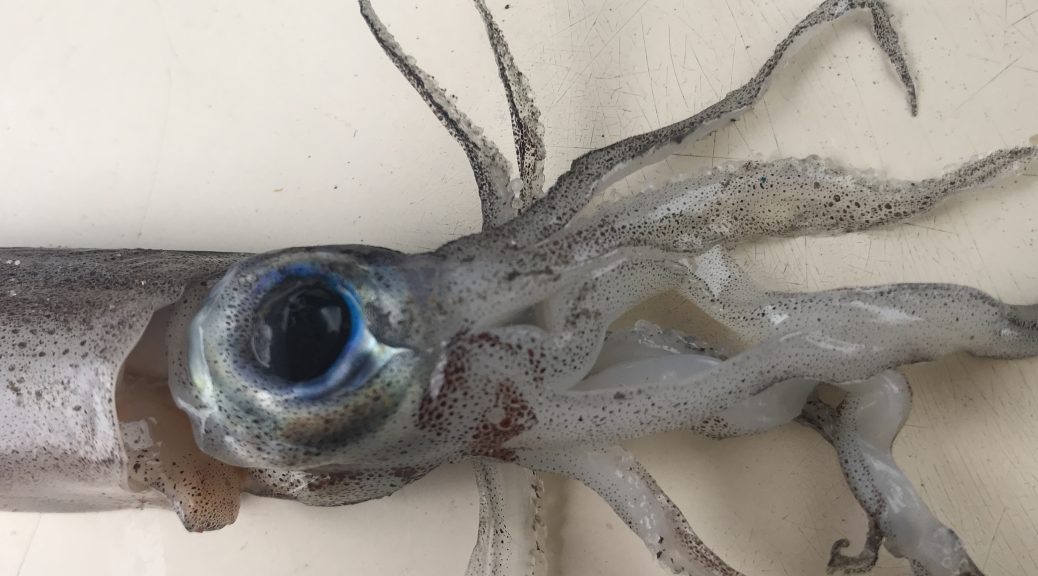
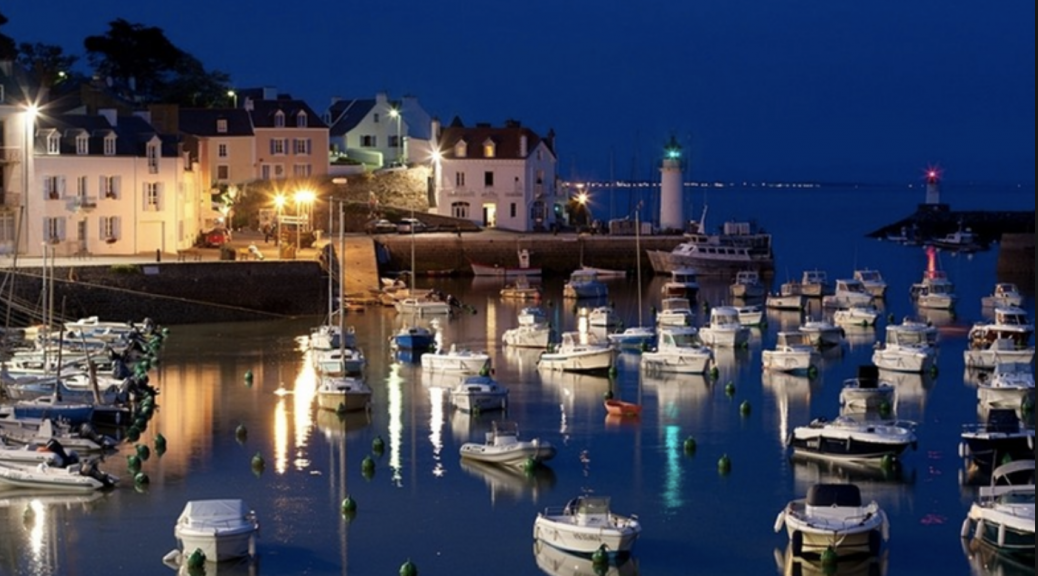

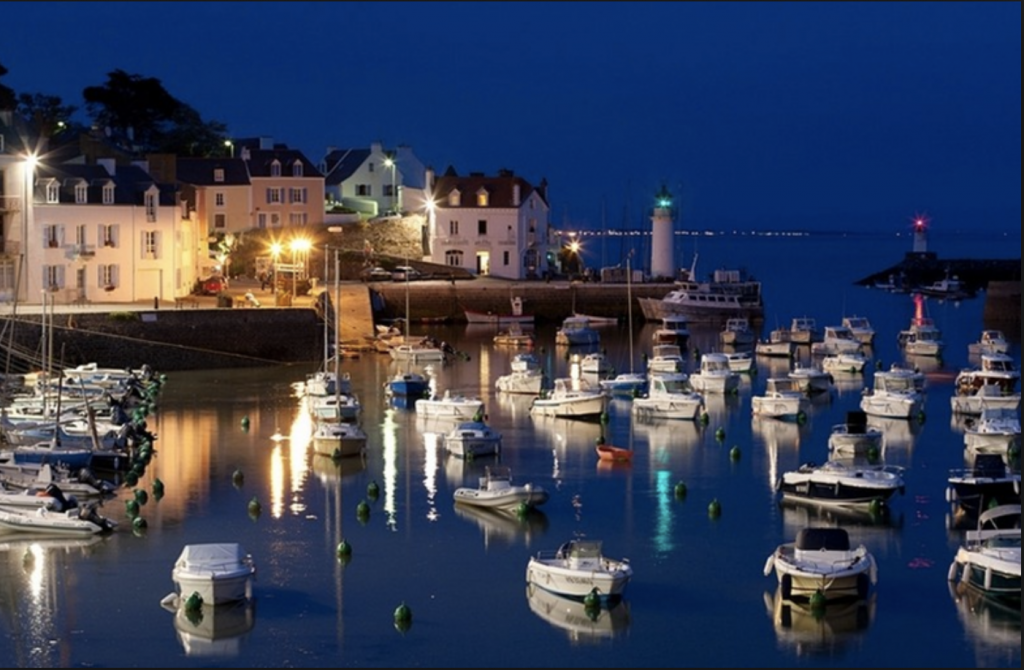
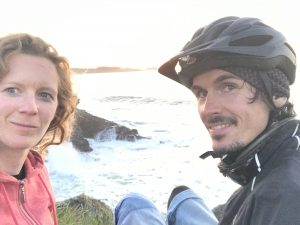
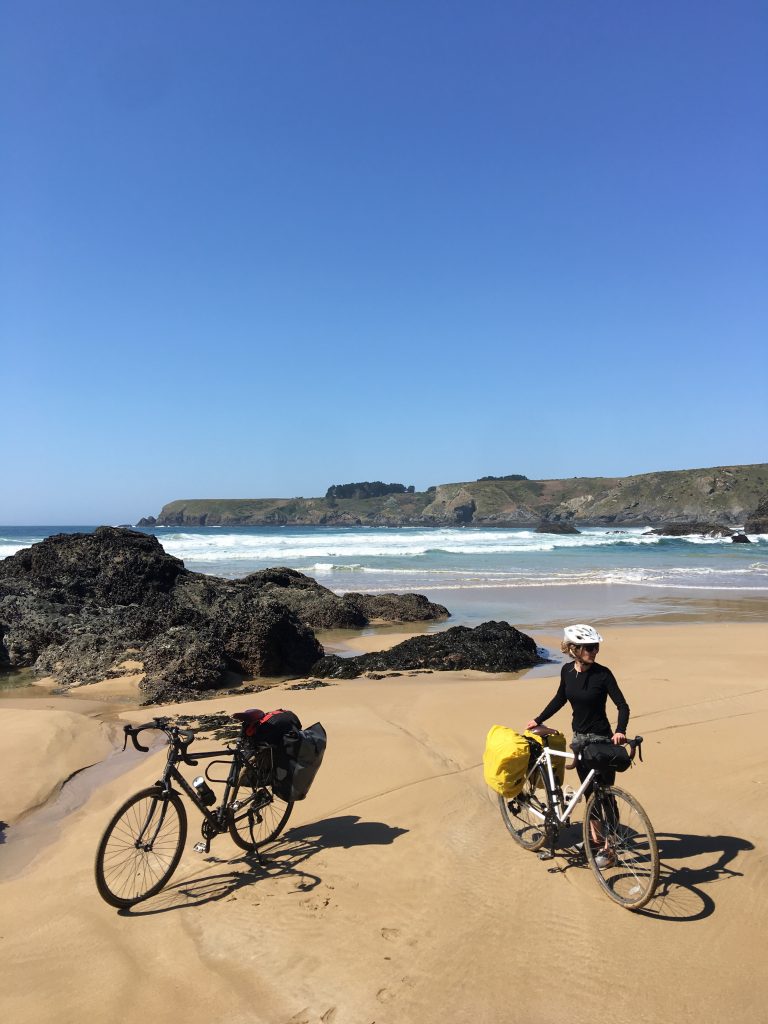
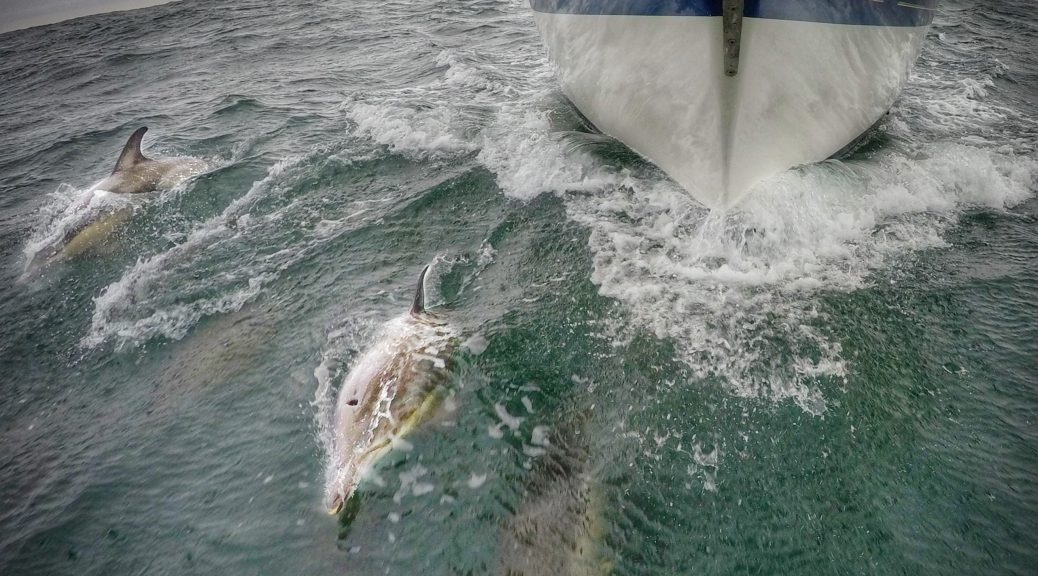
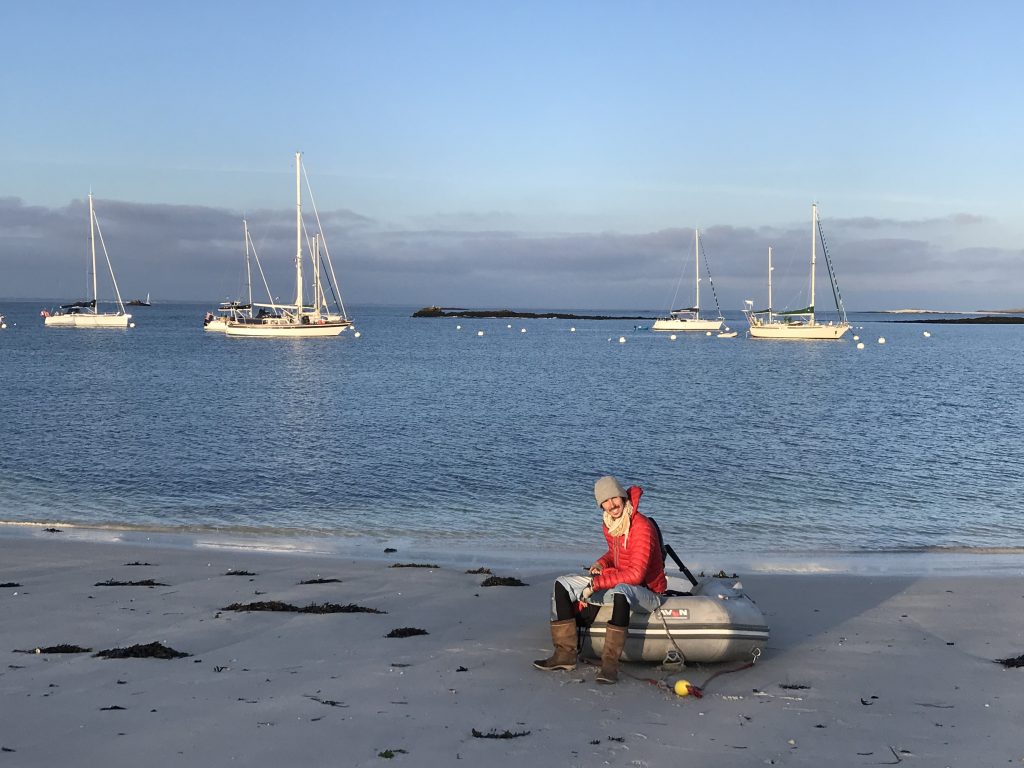 Turquoise waters and huge (clean!) sandy beaches. It is the only place to find a rare narcissus which grows on one of the islands, different to other varieties its head dips demurely and perhaps rather sadly more like a bluebell than the happy daffodil family but none the less delicately.
Turquoise waters and huge (clean!) sandy beaches. It is the only place to find a rare narcissus which grows on one of the islands, different to other varieties its head dips demurely and perhaps rather sadly more like a bluebell than the happy daffodil family but none the less delicately. 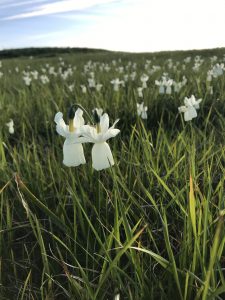 That evening moored up, which had taken some time to find as it is all relatively shallow, we were cooking when through the hull of the boat came strange noices. Running on deck there was an unusual scene… A dolphin with a deep piecing roaring noice was assertively head diving around the mooring buoy Shadowfax was attached to. He then moved onto several of the other boats before returning to the stern where he appeared to want to have some interaction and attention, trying to get as close as possible to us, perched on a little ledge. He seemed friendly but strong, this was a big dolphin quite different to the smaller ones we had seen swimming together before….
That evening moored up, which had taken some time to find as it is all relatively shallow, we were cooking when through the hull of the boat came strange noices. Running on deck there was an unusual scene… A dolphin with a deep piecing roaring noice was assertively head diving around the mooring buoy Shadowfax was attached to. He then moved onto several of the other boats before returning to the stern where he appeared to want to have some interaction and attention, trying to get as close as possible to us, perched on a little ledge. He seemed friendly but strong, this was a big dolphin quite different to the smaller ones we had seen swimming together before….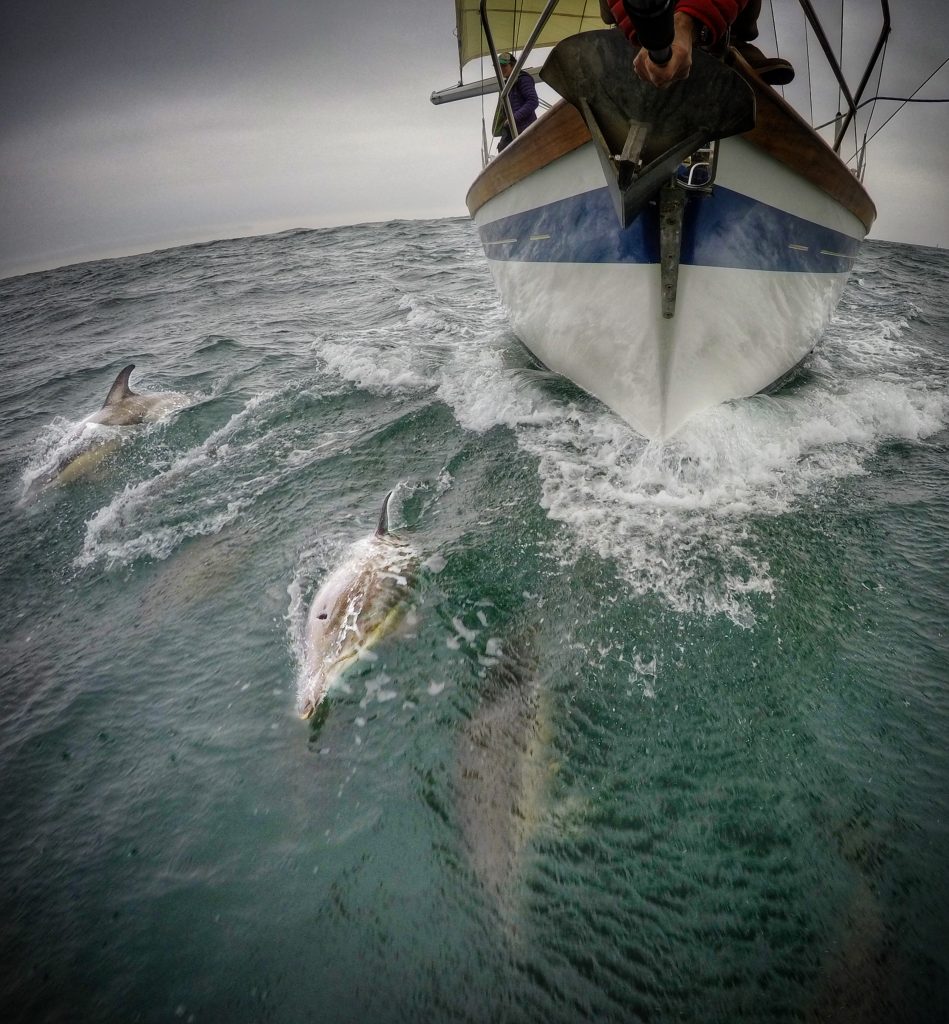
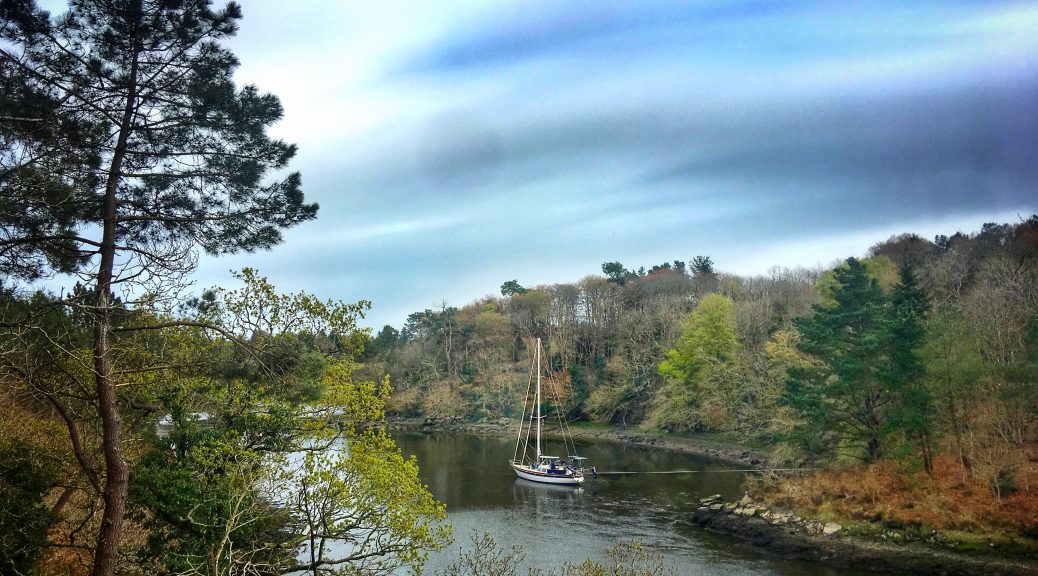
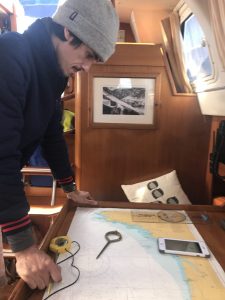
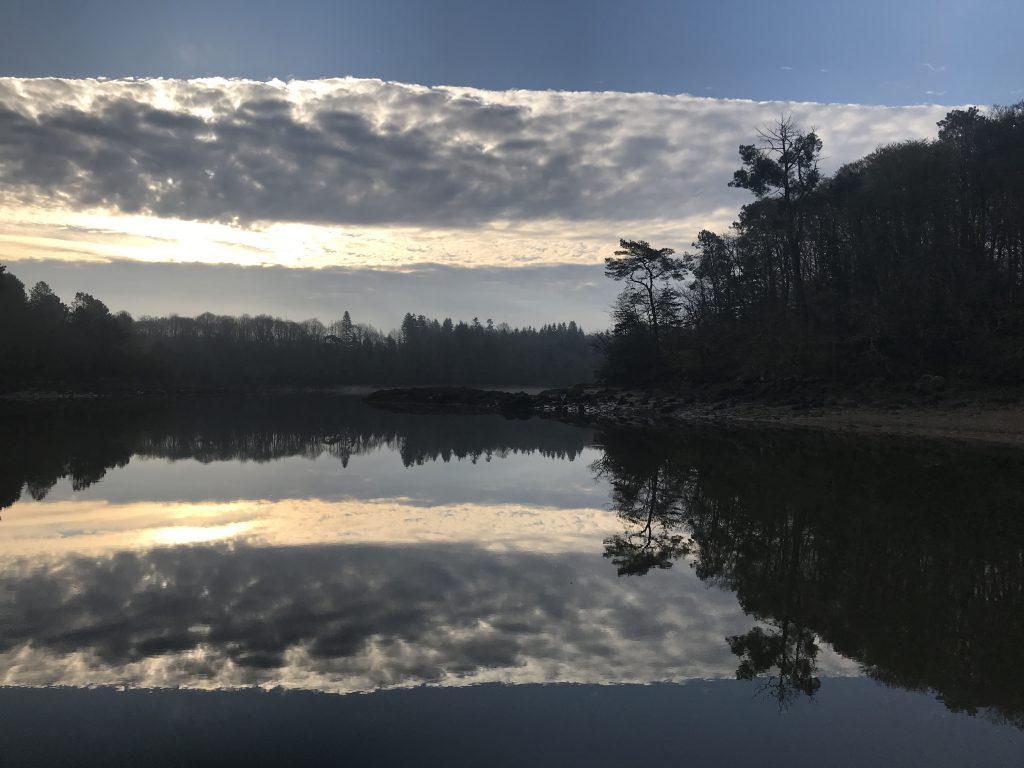 The next day the mist hung atmospherically over the water. On going ashore wild oysters were found here on the banks. Their shells fragile but strong each one totally unique. Barnicles having found their home on many of them, made up of lines like contours as if they are little planets made up up many kinds of ivory white.
The next day the mist hung atmospherically over the water. On going ashore wild oysters were found here on the banks. Their shells fragile but strong each one totally unique. Barnicles having found their home on many of them, made up of lines like contours as if they are little planets made up up many kinds of ivory white.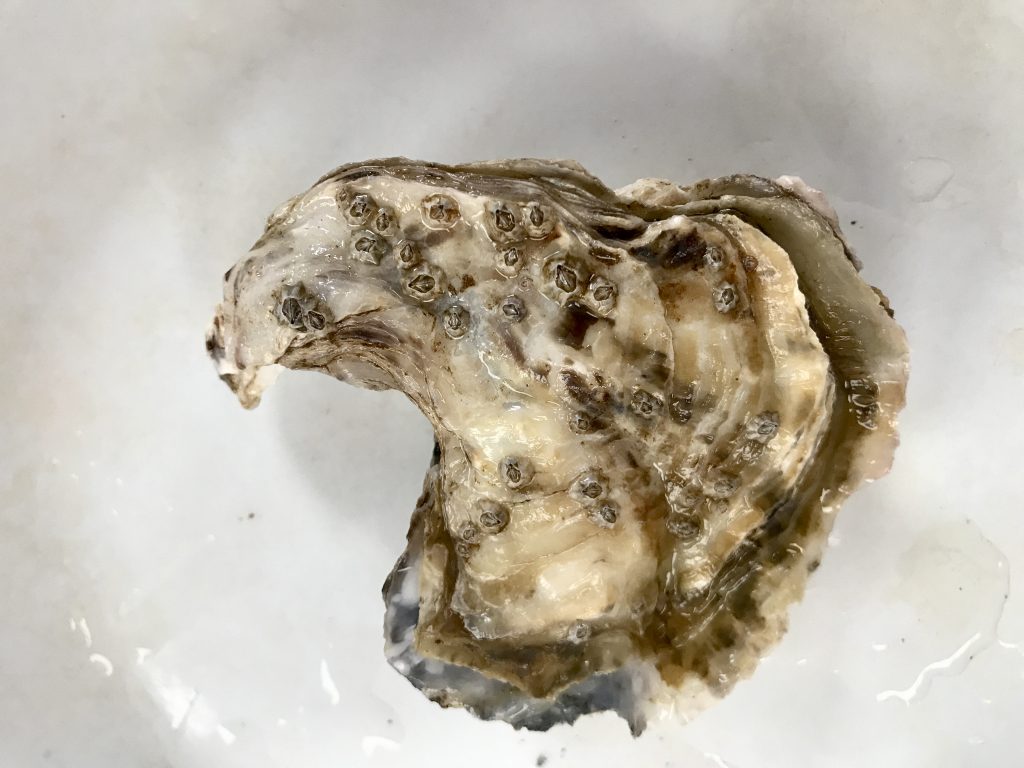
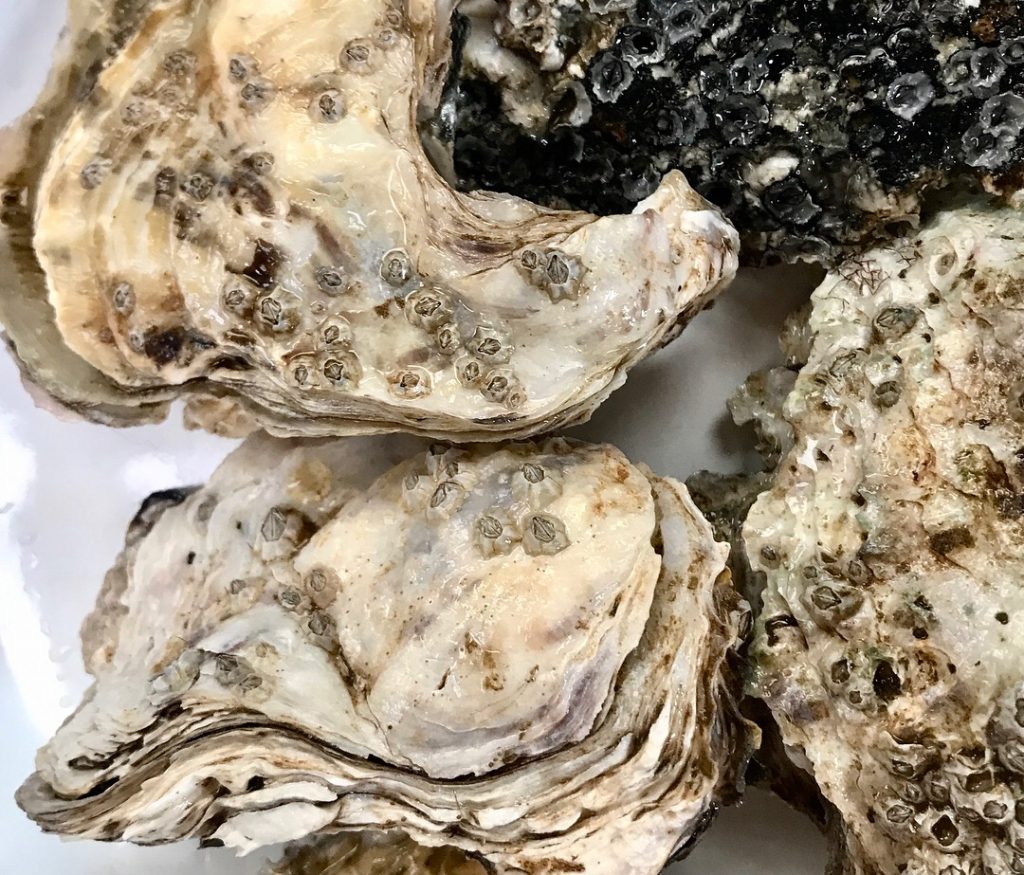 Tim got to work early on dismanterly the inmast furling, this had been problematic since the beginning making it very difficult for one of us to take the main sail in or out easily or quickly. He is very good at fixing things, almost everything, but this was always going to be a challenge and we were now in an isolated anchorage, at least up a river and not out to sea but in a remote location if anything didn’t quite go to plan or any other materials needed.
Tim got to work early on dismanterly the inmast furling, this had been problematic since the beginning making it very difficult for one of us to take the main sail in or out easily or quickly. He is very good at fixing things, almost everything, but this was always going to be a challenge and we were now in an isolated anchorage, at least up a river and not out to sea but in a remote location if anything didn’t quite go to plan or any other materials needed. 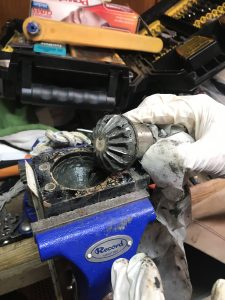 A long day was spent taking panals off, degreasing, regreasing, checking bolts and cogs, readjusting ropes. True to character all back in place by the end of the day and mission accomplished the sail could be furled and defurled much more easily. This was significant as it makes being able to handle the boat solo much easier and if at times conditions are getting more difficult the sails need to be got in as quickly and easily as possible. The forfeit for the feat though was a race, run, strip to bow, dive into freezing water and swim to the stern to calm down after all the excitement!!
A long day was spent taking panals off, degreasing, regreasing, checking bolts and cogs, readjusting ropes. True to character all back in place by the end of the day and mission accomplished the sail could be furled and defurled much more easily. This was significant as it makes being able to handle the boat solo much easier and if at times conditions are getting more difficult the sails need to be got in as quickly and easily as possible. The forfeit for the feat though was a race, run, strip to bow, dive into freezing water and swim to the stern to calm down after all the excitement!!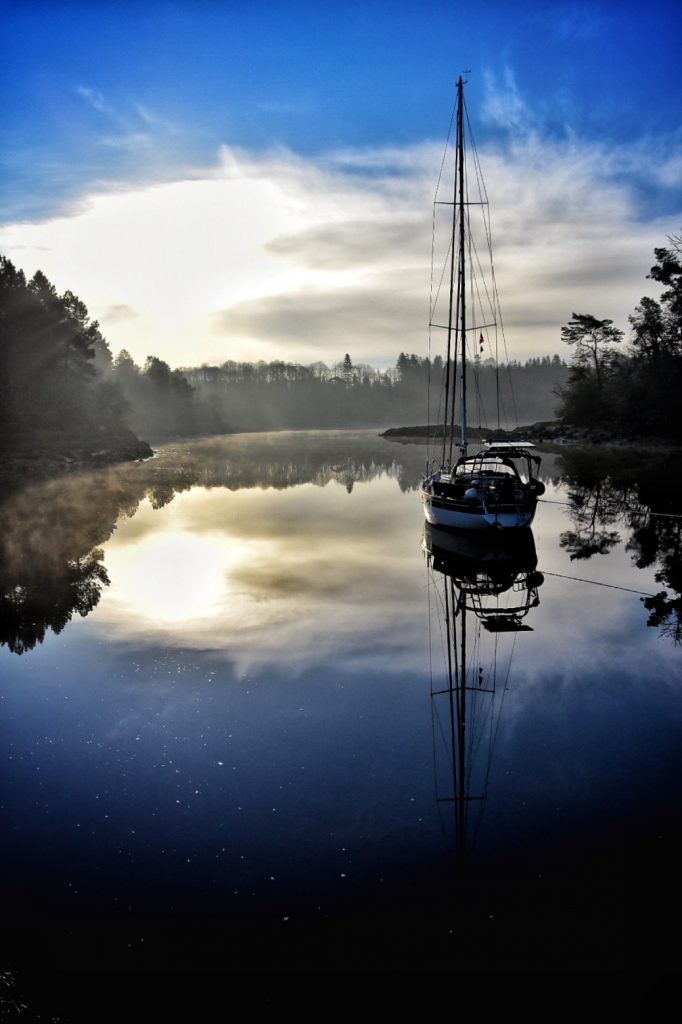
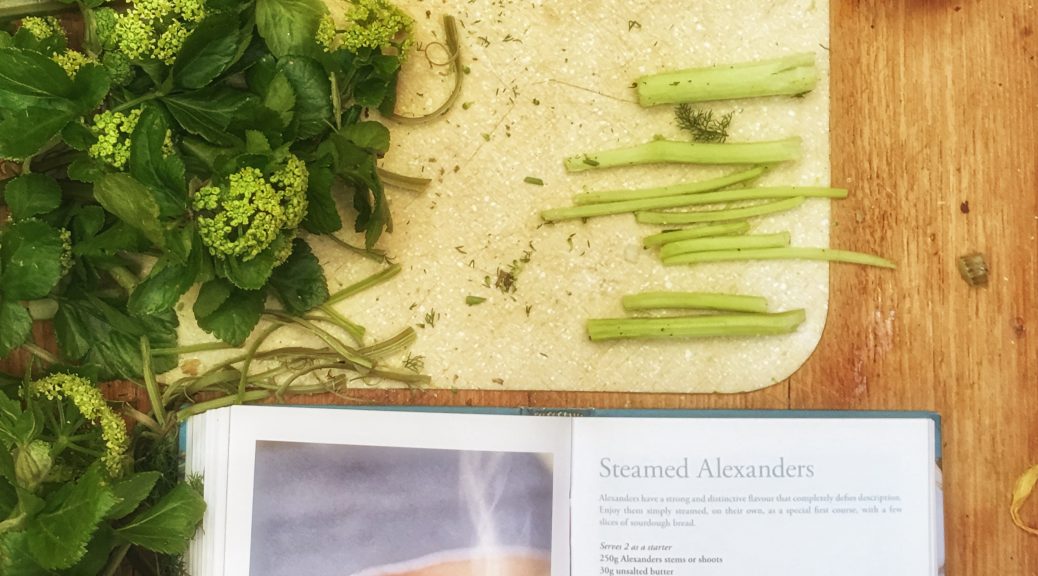
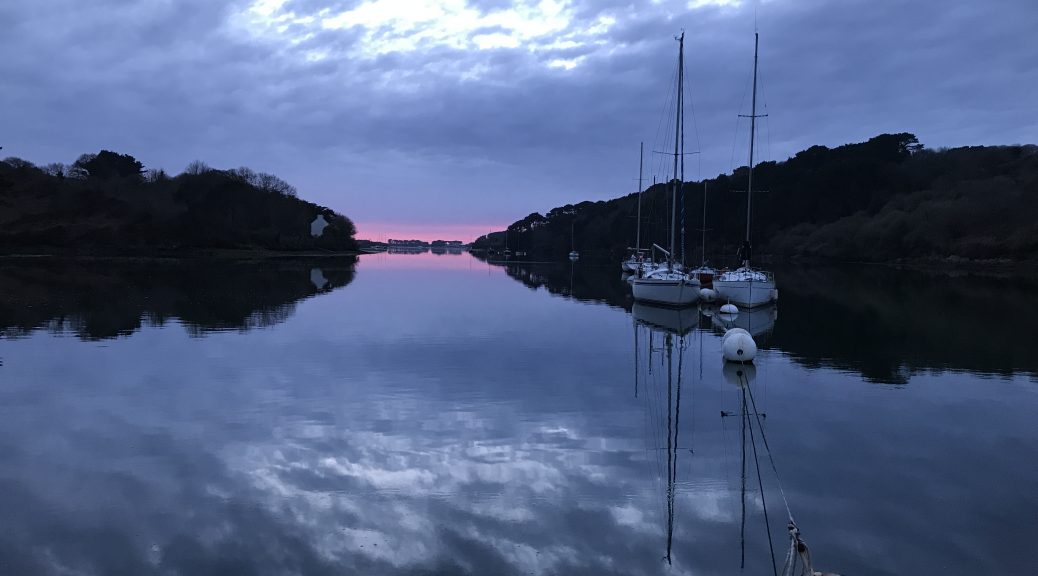
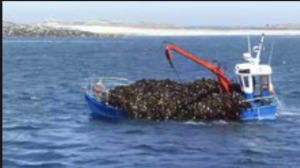 One thing which is retained from the past is the tradition of seaweed harvesting. Every now and then the ‘Geomoniers’ as they are known, glided past in a flat bottomed boat with a small crane attached piled high with this slimy iodine rich crop. In the past and the present day they were used as fertilisers and spread on fields but today there are also more sophisticated uses in the pharmaceutical industry for cosmetics and as natural ingredients in herbal remedies.
One thing which is retained from the past is the tradition of seaweed harvesting. Every now and then the ‘Geomoniers’ as they are known, glided past in a flat bottomed boat with a small crane attached piled high with this slimy iodine rich crop. In the past and the present day they were used as fertilisers and spread on fields but today there are also more sophisticated uses in the pharmaceutical industry for cosmetics and as natural ingredients in herbal remedies.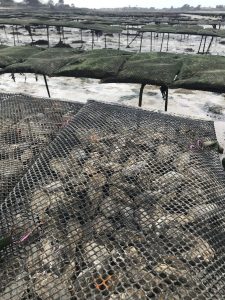
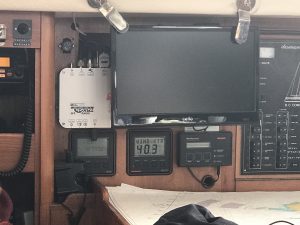 We were waiting for conditions to calm before rounding the Western most part of France and tackling the Chenal Du Fort. However, fustratingly our progress was once more hampered by more bad weather and strong winds predicted so the decision was made to move up
We were waiting for conditions to calm before rounding the Western most part of France and tackling the Chenal Du Fort. However, fustratingly our progress was once more hampered by more bad weather and strong winds predicted so the decision was made to move up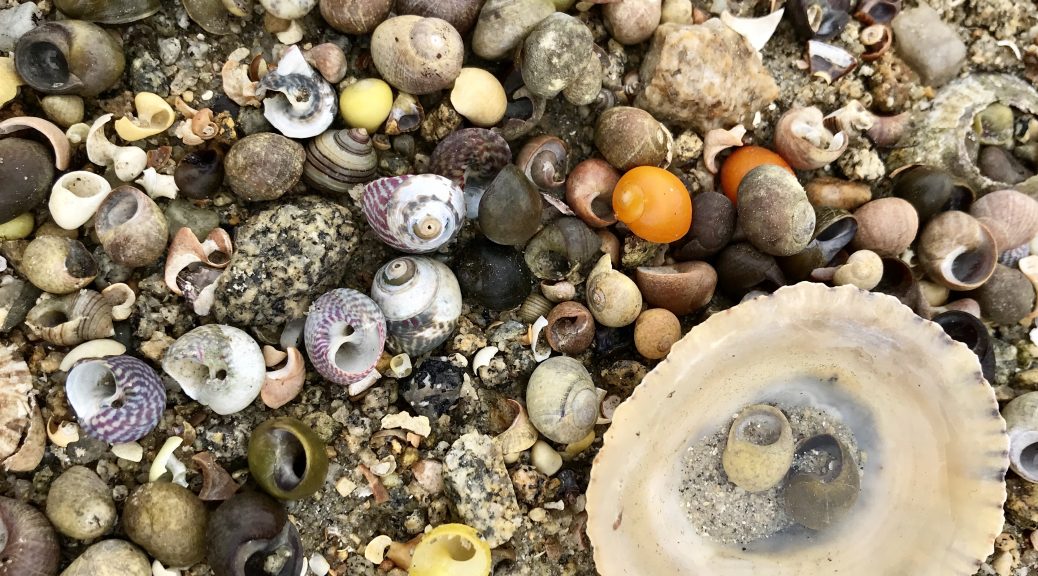
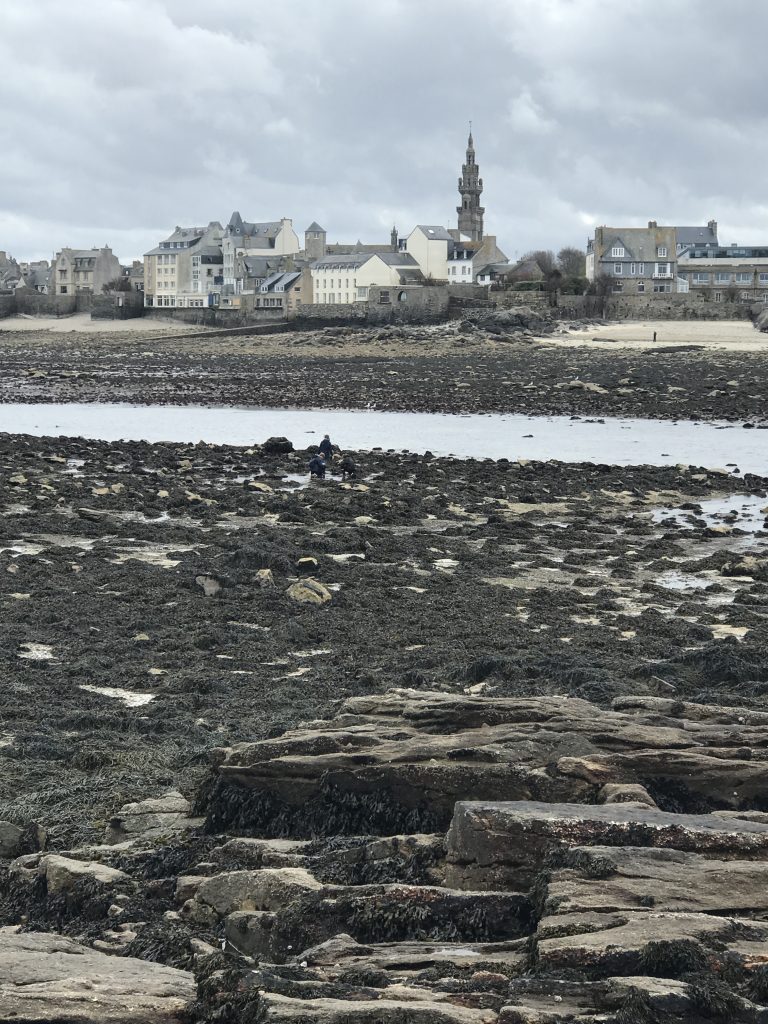
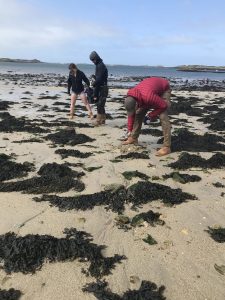
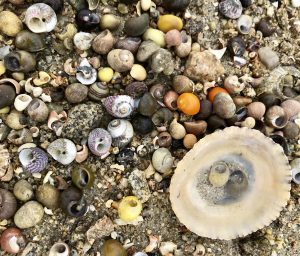 Of course once garlic, parsley and butter was added this could have been true of any little morsel and it certainly was a little morsel if a little chewy, tasty enough. Another intriguing find came as Tim shouted across the raw of the sea “This man has steak of the sea!” The Roscoffian bought out a huge fleshy creature the size of a small hamburger which came out of the most beautiful of turquoise inlaid iridescent shells. He smacked his lips with appreciation of “le steak du mer”! The other thing which was learnt about Roscoff and as you will find out in true Tricolour style this is mainly about eating, was that this was the port the ‘French Jonnys’ as the English like to put it would be sent off to work from dawn to dusk with nothing but their gallic charm, seductive broken English and strings of up to 100kg of pink onions to sell to passing housewives.
Of course once garlic, parsley and butter was added this could have been true of any little morsel and it certainly was a little morsel if a little chewy, tasty enough. Another intriguing find came as Tim shouted across the raw of the sea “This man has steak of the sea!” The Roscoffian bought out a huge fleshy creature the size of a small hamburger which came out of the most beautiful of turquoise inlaid iridescent shells. He smacked his lips with appreciation of “le steak du mer”! The other thing which was learnt about Roscoff and as you will find out in true Tricolour style this is mainly about eating, was that this was the port the ‘French Jonnys’ as the English like to put it would be sent off to work from dawn to dusk with nothing but their gallic charm, seductive broken English and strings of up to 100kg of pink onions to sell to passing housewives.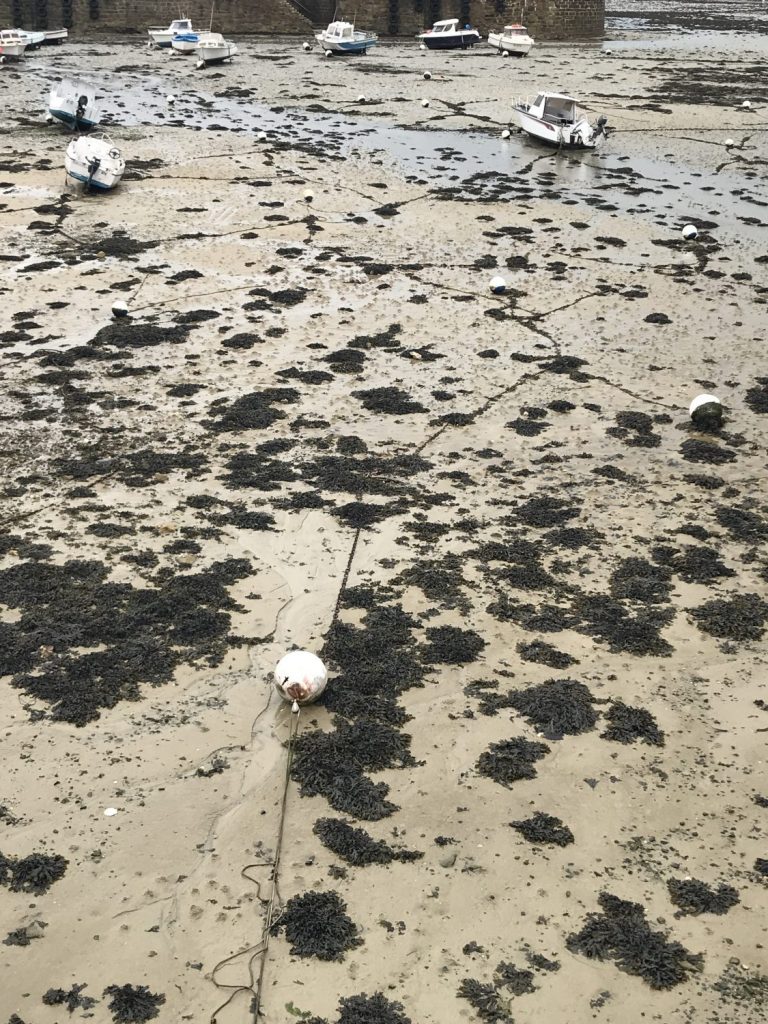
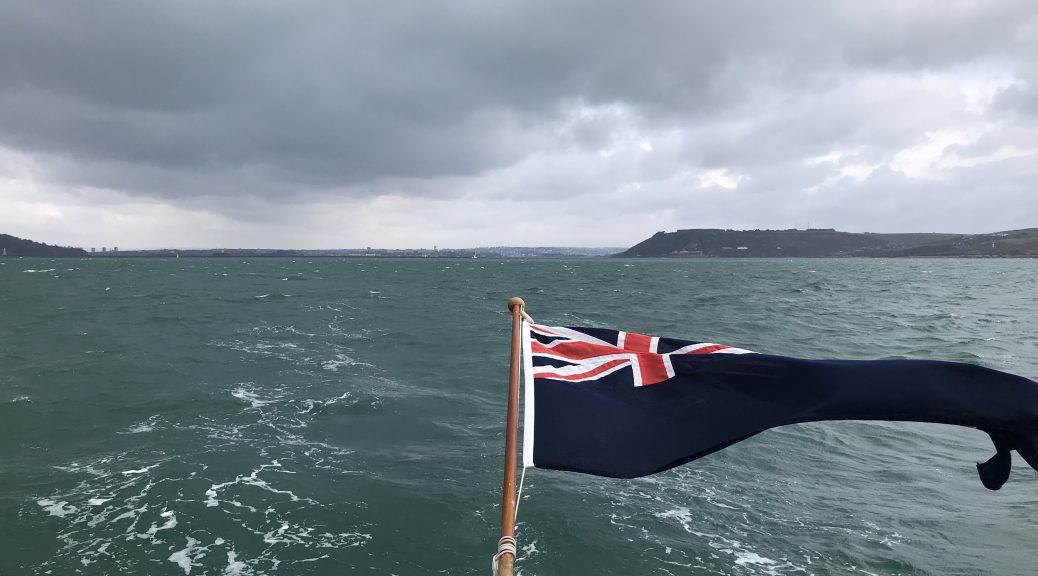
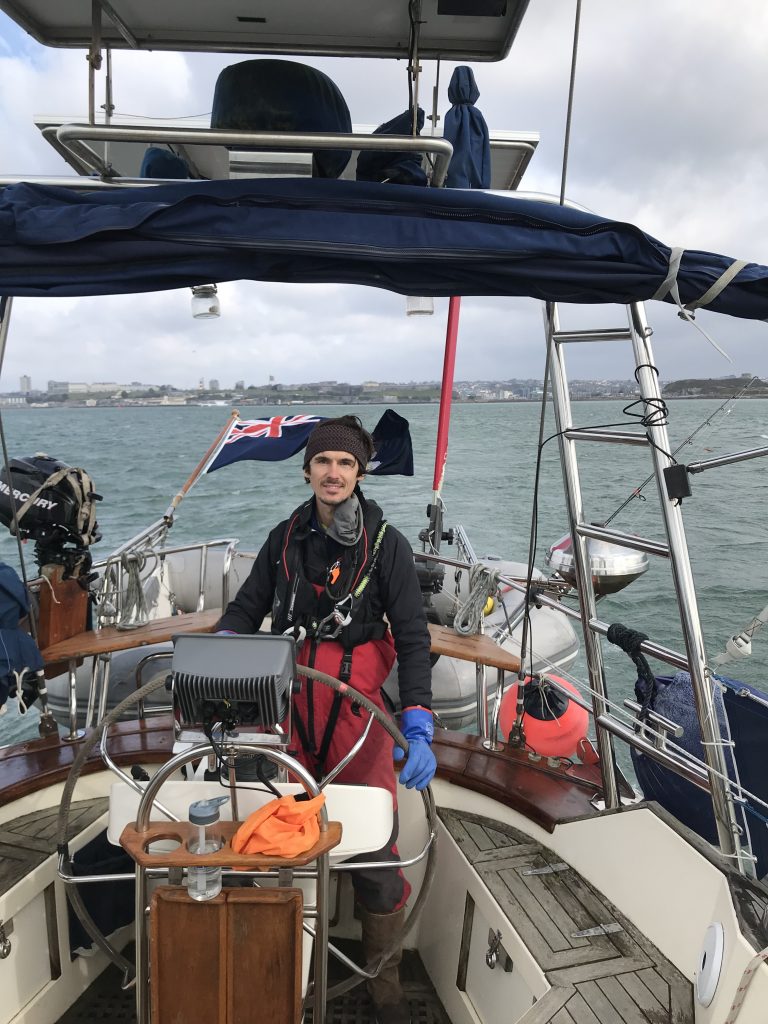
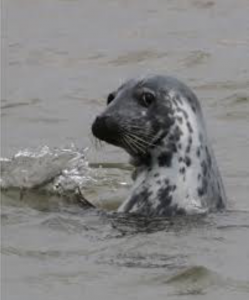 The lock gate master shouted from above that he’s a well known character and has been around for years, turning up promptly when the lock gate open to guzzle delicious fish guts floating past from where the fishing boats would offload their cargo at the fish market warehouse, which had been our neighbour.
The lock gate master shouted from above that he’s a well known character and has been around for years, turning up promptly when the lock gate open to guzzle delicious fish guts floating past from where the fishing boats would offload their cargo at the fish market warehouse, which had been our neighbour.